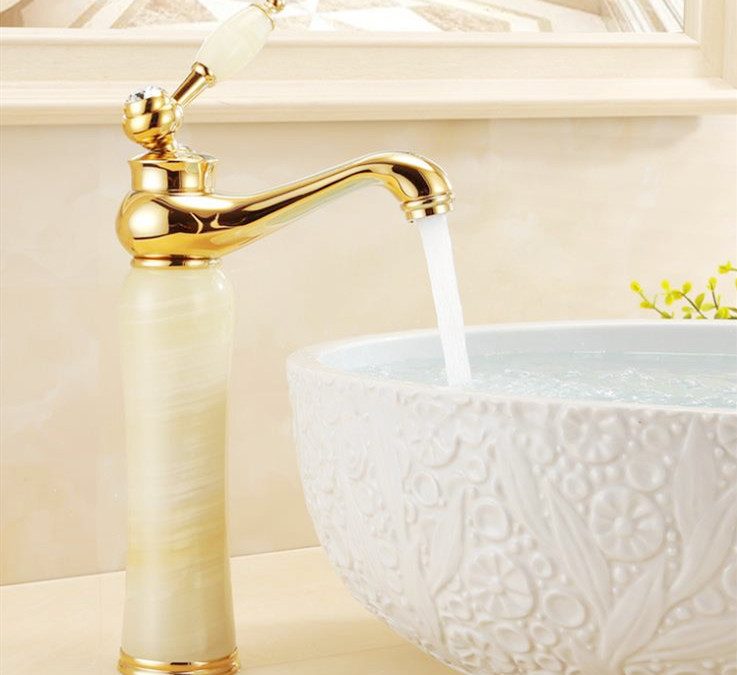- Contact us now!
- +86 18868944843
- ken@nbthe.com
How to choose the right faucet for the new house?

The overall structure of the faucet is divided into spool, main body and surface layer. The spool is the part that controls the flow of water in and out, the heart of the faucet, whether it can last or not depends on here; the main body is the main component of the faucet, that is, the skeleton, most of the water pollution is the poor material of this part; the coating is the surface material of the faucet, that is, the skin of the faucet, which is the faucet’s face value.
Can it last long?
The faucet is turned on and off every day. We can’t remember how many times it is switched on and off in a day. So the first question we consider when buying is whether it can be used for a long time. When switching, the active part of the tap is in the spool, so if you want it to last longer, it depends on the quality of the spool.
The quality of the spool can be judged by whether it can withstand long-term drip-free test, which is aimed at the life test of the spool. It is clearly stipulated in the national water tap test standard that the no-drip leakage test of switches should not be less than 200,000 times of switches. In addition to judging the quality from this test index, it can also be sensory evaluation. Turning the handle up, down, left and right, light and without hindrance, it shows that the quality is good.
At present, ceramic spool is the most suitable material for home use. It is also widely used by many faucet manufacturers. Its cost-effective ratio is the highest, because it is easy to obtain materials, while wear-resistant, cold and hot temperature can be adapted for a long time. Although the impurities in the water may cause damage to the ceramic spool, the water quality of the tap water used by the residents is better, and this factor can be ignored basically.
Purchase TIPS
Material selection: Ceramic spool, cost-effective.
Quality evaluation: No drip leakage test of switch requires no less than 200,000 times of switch number.
Sensory evaluation: Up, down, left and right rotation of the handle, light, unhindered feeling.

Will it pollute the water quality?
Previously, the frequent exposure of excessive lead content in faucets led to lead poisoning in residents, which made people start to panic, so when choosing faucets, besides quality, I will also consider whether it will pollute the water quality.
To see whether the tap will pollute the water quality, it depends on the material of the main part which has long been in contact with the tap water.
The main faucet materials are cast iron, plastic, zinc alloy, copper alloy, stainless steel.
Cast iron is easy to rust, plastic is easy to aging, zinc alloy is poor stability, easy to burst, resulting in the use of not long, so it is not recommended to buy these three materials faucets.
At present, copper alloy is the most suitable material for home use, because copper ions have a certain bactericidal effect, and bacteria can not produce antibodies, so the inner wall of copper nozzle will not breed bacteria, which is incomparable with other materials, which is why many brands now choose copper material for faucets.
Brass in copper alloy is the combination of copper and zinc. It has good mechanical properties, wear resistance and corrosion resistance, so it has become the preferred faucet material. Brass can be divided into many types because of its copper content. At present, most faucets are made of H59 copper, which accounts for 57% to 61% of copper content. In fact, some international bathroom brands even use H62 copper to produce faucets, because H62 copper has higher copper content and better corrosion resistance than H59 copper.
In addition to copper and zinc, brass also contains trace amounts of lead (less than 0.5%). When the tap is exposed to lead poisoning, people think it is caused by the lead of brass itself. But all the people who leave the dose to talk about poisoning are hooligans. At present, the national standard for the lead content of the tap is set as long as the amount of lead released is not more than 5 ug/L, it will not endanger human health. In fact, the standard is set. Accurate H59 copper does not need to worry about this problem. Most of the faucets on the market that have detected excessive lead precipitation are not standard brass, but are made of zinc alloy with secondary filling, or infiltration of too many impurities, or roughly processed with recycled waste copper. The faucets produced in this way have quality problems.
Another option is stainless steel faucets to completely eliminate lead exposure. Now many brands begin to develop stainless steel faucets, because it can be completely lead-free, but because of the complex process, no copper bacteriostatic advantages, it is not popular at present.
Purchase TIPS
Material Selection: Brass is the most suitable tap material, which has bacteriostatic effect. Among them, H59 copper is the most suitable, lead content is also qualified, H62 copper lead content is less and more corrosion-resistant; stainless steel can achieve lead-free, select 304 food-grade stainless steel material, can be long-term contact with drinking water.
Pollution assessment: The lead content in the lead content test is not more than 5 ug/L, which is qualified.
Sensory evaluation: Brass can be identified by weight estimation. Brass is heavier and harder, and other substitutes are lighter and softer. Stainless steel can be sensory compared with flumes made of food-grade stainless steel.If you want to know more, you are welcome to see our company’s website on the faucet product material details.





